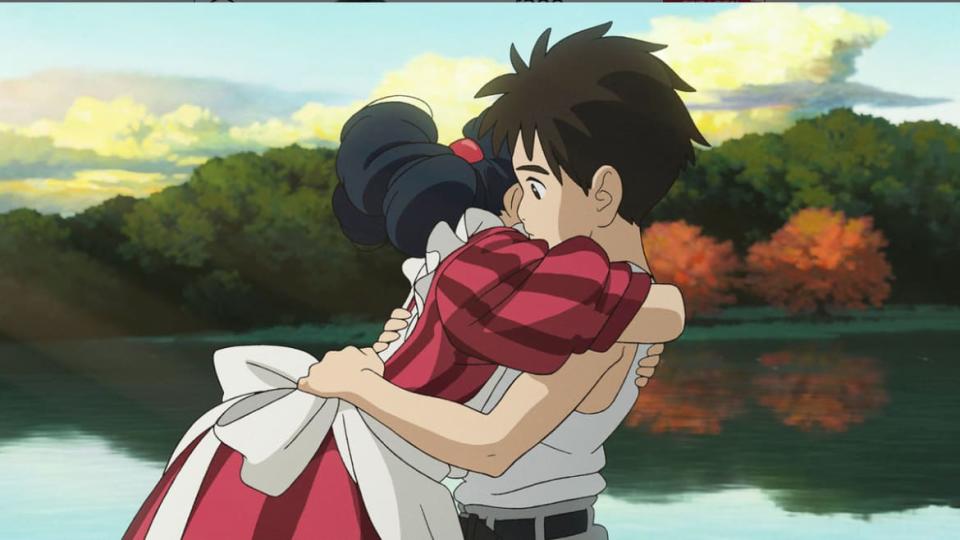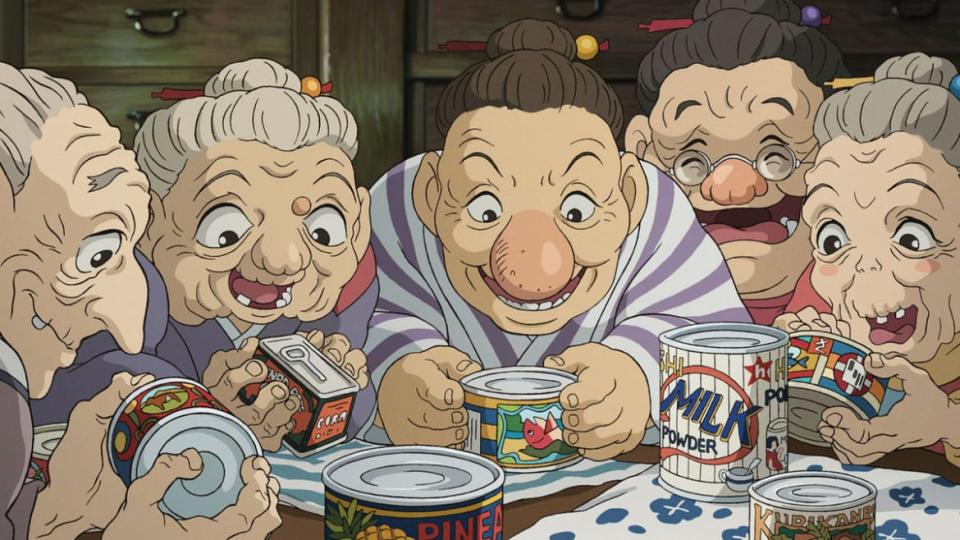‘The Boy and the Heron’ Is a Fantastically Fitting Finale for Miyazaki’s Career

TORONTO—Hayao Miyazaki has long been one of cinema’s most revered filmmakers. A pioneer of animation, Miyazaki has spent nearly 40 years at the head of Studio Ghibli, transforming it from a plucky upstart into one of the world’s leading animation studios. His long, astonishing career has delivered bona fide masterpieces like Spirited Away, My Neighbor Totoro, and Princess Mononoke. That’s why animation fans, myself included, were devastated when Miyazaki announced his retirement in 2013. But he had one final film to give us, one of his best: the extraordinary The Wind Rises, which felt like a perfect swan song.
But Miyazaki was not, in fact, going gently into that good night. Instead, in 2021, he came out of retirement to announce his twelfth (and, this time, final) film: How Do You Live? Remarkably, the film was marketed in Japan with just a single poster—no trailer, stills, plot information, nothing. The names of Miyazaki and Studio Ghibli have proved more than enough; since it hit theaters there in July, the film has become one of the highest-grossing movies in Japanese cinema history.
The Best of Studio Ghibli in Seven Unforgettable Scenes
Now with a new title—the hotly debated The Boy and the Heron—the film has finally made its way to its international premiere at the Toronto International Film Festival. As an ardent admirer of Studio Ghibli and Miyazaki, I nervously anticipated the film’s arrival. Could more Miyazaki be a bad thing? Is he past his prime? Could the film possibly live up to The Wind Rises? The short answers are no, hell no, and absolutely.
In keeping with the fantastic lack of advertising in Japan, I’ll tell you only the bare minimum of the plot—but feel free to skip to the next paragraph if you want no details whatsoever. The Boy and the Heron follows Mahito, a young boy struggling with the loss of his mother, who was killed in a fire during World War II. His father remarries, and the family leaves Tokyo for a bizarre old home in the countryside. It’s there that Mahito discovers a mysterious tower, and a talking heron, that will change his life forever.
Ghibli films are well regarded for their gorgeous and distinct, if reliable, animation style. But The Boy and the Heron is the most astonishing-looking film the studio has yet made. The opening sequence is legitimately jaw-dropping, literally blurring lines in chaotic and stunning fashion, leading to a fiery burst of color and sound. There are a number of scenes in the film that are positively transportive in their beauty, pushing the boundaries of animation in ways Ghibli hasn’t done before. Miyazaki blends fantasy and realism with such a deft touch that everything feels entirely plausible in the increasingly outrageous world he’s crafted in The Boy and the Heron. Backgrounds are rich and textured, the characters look fantastic, and there’s a dream sequence that will take your breath away while chilling you to the core.

Across every facet, the film feels reflective of Miyazaki’s career. There are plenty of elements that fans will recognize from his previous films. There are fantastical creatures galore, from the skin-crawlingly creepy to the eye-wateringly adorable (trust me when I tell you the Warawaras will change your life). There are plenty of memorable characters with bold, distinguishing physical features. All the themes you’ve come to expect from Miyazaki’s work are here too: environmentalism; friendship; Japanese culture; children; and even tremendously appetizing food are all present. In a way, it almost feels like a victory lap—but Miyazaki’s foot is firmly on the pedal, pushing himself further and further into brilliance. The Boy and the Heron finds Miyazaki considering his future, as the film grapples with the idea of one’s legacy and impact, and how they can live on after that person is gone.
These questions are all channeled through young Mahito. There is perhaps nobody on Earth who believes in the capabilities of children more than Miyazaki and, remarkably, the older the filmmaker gets, the more acutely he understands their limitless possibilities. In a brief sequence following Mahito at school, Miyazaki conveys that unique childhood anxiety of going to a new place and how frightening a place like school can be. But these fears don’t make Mahito give up on life—instead, as the film goes on, he becomes more and more optimistic about the world and making it a better place. This is, incidentally, one of the driving themes of Miyazaki’s work and The Boy and the Heron itself.

Between these thematic explorations and the visual splendor, The Boy and the Heron is exquisitely balanced. The detail is simply outstanding, and every imaginable inch of the frame has been thought through. The story is poignant, but occasionally exhausting to take in all at once—this will be a film that’ll take multiple watches to really let its genius soak in. It’s magical to watch a master of their craft at work, and I cannot wait to see it again (and again).
Considering just how intensive a process animation is and Miyazaki’s age (82), there’s a strong chance that The Boy and the Heron will actually be Miyazaki’s last film. If that’s true, animation’s maestro is going out at the top of his game. The Boy and The Heron is a glorious testament to everything that makes Miyazaki Miyazaki. It mixes the comfort and reliability of a greatest hits album with the bold visionary direction of a thrilling, experimental album from an artist at the peak of their powers. If The Boy and the Heron is really the end of Miyazaki’s career, he’s gone out with a triumph.
Get the Daily Beast's biggest scoops and scandals delivered right to your inbox. Sign up now.
Stay informed and gain unlimited access to the Daily Beast's unmatched reporting. Subscribe now.

 Yahoo News
Yahoo News 
